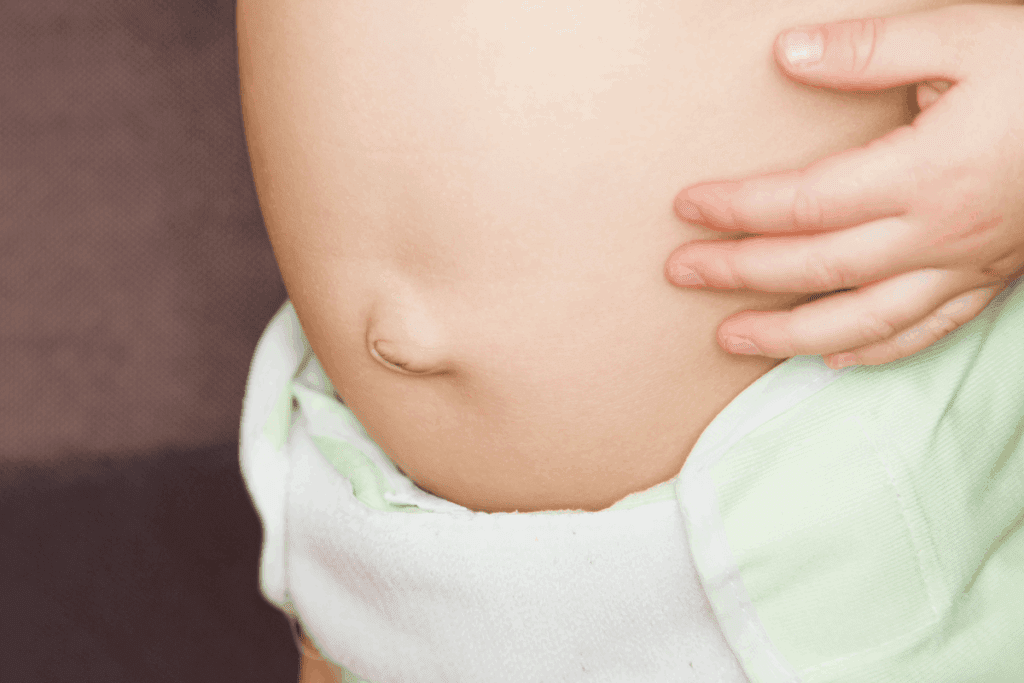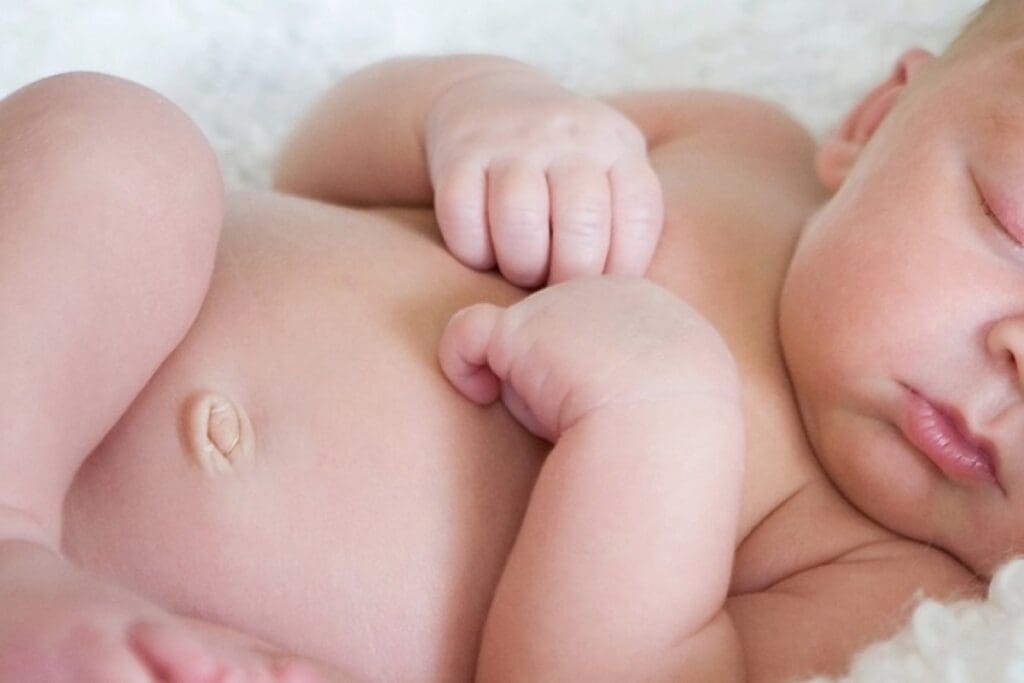Last Updated on November 24, 2025 by
Treating a hernia in children needs a detailed plan. This plan considers the child’s health and the hernia type. We aim to offer top-notch healthcare and support for international patients.
Pediatric hernia treatment mainly includes surgery. Over 81% of kids get laparoscopic repair. About 74% have sac high ligation. Boys make up nearly 80-86% of cases, and complications before leaving the hospital are less than 0.4%.

Seeing a hernia in a child can worry parents. But thanks to pediatric surgery progress, treatments are safer than before. New studies offer insights into the best surgery methods, timing, and results. This ensures kids get the best care possible.
It’s important to know about the different hernias in kids. This knowledge helps parents feel better. Each type of hernia has its own details.

Inguinal hernias are the most common in kids, mostly in boys. They happen when tissue bulges through a weak spot in the muscles. Boys are more likely to get them, with about 7% affected, compared to almost 1% of girls. You might see a bulge in the groin area, which gets bigger when they cry or strain.
Umbilical hernias are common, showing as a soft bulge near the belly button. They are usually painless and show up in kids aged 2-3. They happen when the intestine bulges through a weak spot near the belly button. Most close by the time kids are 5.
Fat-containing umbilical hernias are a specific type. They show as fatty tissue bulging near the navel. They are not usually painful but can worry parents. A doctor should check to see if it goes away or needs treatment.
Hernias can also appear above the belly button, called epigastric hernias. They are less common but can happen. They show as a bulge between the navel and the chest. Even though they might be small, they can cause problems and might need surgery.
It’s key for parents and caregivers to know about the different hernias in kids. Some might heal on their own, but others need medical help. Always talk to a doctor to figure out the best treatment.
It’s important to know the signs of a hernia in kids. This can help get them the medical help they need quickly. Hernias can show up in different ways, and knowing these signs is key.
One common sign is a visible bulge or lump. This is often seen in umbilical hernias near the belly button. The bulge gets bigger when the child cries, coughs, or strains.

Infants with hernias might have a swollen belly. This happens when the intestine or other tissue bulges through a weak spot. It’s important to watch for this, mainly in newborns and young babies.
Kids with hernias might feel pain or discomfort. This is more common with big hernias or when they become trapped. The pain can be steady or come and go, getting worse with activities like lifting or bending.
Some common pain patterns include:
A strangulated hernia is a serious issue. It happens when the blood supply to the herniated tissue is cut off. Warning signs include:
If your child shows any of these signs, get them medical help right away. This can prevent serious problems.
Knowing when to get medical help is key to your child’s health. As a parent, it’s important to know the signs of a hernia problem.
Some symptoms mean your child’s hernia needs urgent care. Look out for emergency symptoms like severe pain, tenderness, or swelling. If your child shows these signs, get medical help fast.
A hernia can also become incarcerated or strangulated, cutting off blood. This is a serious emergency. Look for discoloration, severe tenderness, and vomiting. If you see these, get medical help right away.
A ruptured hernia is a serious issue that needs quick medical help. It’s rare in kids, but important to know the signs. Look for sudden pain, swelling, or a bulge that hurts when touched.
If your child has had a hernia before and shows these signs, call your doctor fast. A ruptured hernia can cause serious problems if not treated quickly.
Not all hernia symptoms are urgent. But it’s important to know the difference. Normal symptoms might be a painless bulge or occasional discomfort.
But concerning symptoms are severe pain, vomiting, or a hernia that’s red, swollen, or tender. If you’re not sure, it’s best to talk to your doctor.
In short, knowing when to seek medical help can prevent serious issues. If you’re unsure, always get advice from a healthcare professional.
Diagnosing a hernia in children is a detailed process. It combines physical checks with imaging studies when needed. Knowing this can make you feel more ready and less worried for your child.
The first step is a thorough physical check. Your doctor will use different methods to look for a hernia. This includes looking and feeling with their hands. For inguinal hernias, they might ask your child to cough or strain.
“A physical check is key,” says a pediatric surgeon. “It helps us see the hernia’s size and where it is. It’s often the best way to find hernias in kids.”
Even with a physical check, sometimes imaging studies are needed. This is true if the diagnosis is not clear or if there might be complications. Ultrasound is often used because it’s safe and doesn’t use harmful radiation.
Your doctor will ask you several questions to help diagnose and understand your child’s condition. These might include:
Being ready to answer these questions can make the diagnosis process smoother and more effective.
Understanding the diagnosis process helps you support your child better. Remember, a hernia diagnosis is common, and most children get better with the right care.
Parents often wonder if a hernia can heal itself, especially for umbilical hernias in newborns. The good news is that many umbilical hernias in infants close on their own by the time they are 3-5 years old.
For newborns with umbilical hernias, a period of watchful waiting is often recommended. This means keeping an eye on the hernia for any changes or complications, without rushing to surgery.
“Many pediatricians advise parents that umbilical hernias in infants often close spontaneously,” we note. “But, it’s important to follow up with a healthcare provider to ensure the hernia doesn’t cause any issues.”
Conservative management is good for small, asymptomatic hernias. This means regular check-ups with a healthcare provider to watch the hernia’s size and any symptoms.
For small fat-containing umbilical hernias, monitoring is key. While these hernias may not cause immediate complications, they can potentially lead to issues if they become incarcerated or strangulated.
As we advise parents, “It’s essential to work closely with your child’s healthcare provider to determine the best course of action for their specific condition.”
By understanding the options available and working closely with healthcare professionals, parents can make informed decisions about their child’s care.
There are several ways to treat pediatric hernias through surgery. Each method has its own benefits and things to consider. It’s important to know the details of each approach and how they fit different cases.
Laparoscopic repair is a common choice for treating pediatric hernias, used in about 81% of cases. This method uses small incisions to insert a laparoscope and tools to fix the hernia. It offers less recovery time and less pain after surgery, which is good for families.
This procedure lets surgeons see the whole abdominal area. They can find and fix any other problems. The choice to use laparoscopic repair depends on the hernia’s type and size, and the child’s health.
The sac high ligation procedure is used in about 74% of cases. It involves closing the hernia orifice by ligating the hernial sac at the internal ring. This method is simple and effective, making it a favourite among surgeons.
Success with this procedure depends on the surgeon’s skill and on choosing the right patient. The size and location of the hernia, and the child’s age and health history, are important factors.
When to have surgery for pediatric hernias is a topic of debate, mainly for very small babies. Choosing the right time for surgery is complex and depends on the child’s health and the surgery’s risks.
Some kids need surgery early to avoid serious problems like hernia strangulation. Others might wait until they’re older and healthier. The decision on when to operate should be based on each child’s unique situation.
Knowing what to expect after hernia surgery can make things easier for you and your child. It’s important to stick to a care plan to help your child recover well.
Most kids have hernia surgery as outpatients. But sometimes, they need to stay in the hospital. Luckily, the chance of problems right after surgery is very low, under 0.4%.
In the hospital, doctors will watch your child closely. They will help manage pain and teach you how to care for your child at home.
It’s key to take good care of your child at home. Here are some tips:
By following these steps, you can lower the chance of problems and help your child get better.
It’s important to go to follow-up appointments. Our team will check on your child’s healing and answer any questions. The chance of needing another surgery is very low, at 0.74%. This shows the surgery works well and lasts a long time.
Key Takeaways: With the right care, most kids do well after hernia surgery. By knowing what to expect and following our advice, you can help your child have a good recovery.
Understanding pediatric hernias is key to making good choices for your child’s treatment. Knowing the different types, symptoms, and treatment options helps you work with your doctor. This way, you can find the best way to help your child.
We’ve covered many important points about pediatric hernias. This includes how they are diagnosed and treated. Our aim is to give you the knowledge to feel confident in the treatment process. We promise to provide top-notch care that is both innovative and caring.
Choosing a skilled healthcare team and staying up-to-date on your child’s condition is important. This ensures the best results for their hernia treatment. We’re here to support you and your child every step of the way. We’ll guide you and provide care that meets your specific needs.
Children often get inguinal, umbilical, and umbilical hernias above the belly button. Inguinal hernias are more common in boys, making up 80-86% of cases.
Look out for visible bulges or lumps and a swollen belly in babies. Also, watch for pain and signs of a strangulated hernia, like severe pain, vomiting, or fever.
Umbilical hernias in newborns might heal without surgery. But other hernias may need surgery if they’re causing symptoms or strangulation.
Doctors use a physical exam to diagnose hernias. Sometimes, imaging studies are needed. They’ll also ask questions to help diagnose.
Kids can get laparoscopic repair or sac high ligation for hernias. The choice depends on the hernia’s type and severity.
Recovery from hernia surgery is usually quick, with a short hospital stay. Your child will need home care and follow-up visits. The chance of needing another surgery is low, around 0.74%.
Watchful waiting is okay for some hernias, like small umbilical hernias. But, avoid using home remedies like taping a coin on the hernia. Always talk to your doctor first.
Get medical help right away if your child has severe pain, vomiting, or fever. Or if you think the hernia has ruptured. It’s important to know the difference between normal and concerning symptoms.
Subscribe to our e-newsletter to stay informed about the latest innovations in the world of health and exclusive offers!